Mass Bee Deaths Threaten the Food Supply
While I lost a couple beehives or colonies in my home apiary and one in my out yard because of the coldest winter we experienced since moving here in 2020, it was an even worse winter for commercial beekeepers, and I don’t mean weatherwise. Nationally, an estimated 62 percent of hives died, although the video at the end of this post estimates 80 percent. The big question is: why?
The Varroa mite is considered a major contributor to bee deaths and hive losses. Weather also has a big impact, as does poor nutrition. When used improperly, pesticides can kill bees, but pesticide kills are local events and unlikely to have occurred all across the nation.
My fear is Apivar, the leading miticide, is no longer as effective as it once was. Maybe the mites are building up resistance. I did not use Apivar last year because I like to switch my treatments around to prevent resistance, but I used it two years ago. It seemed to work fine then. Many professionals use Apivar because it is fast, easy, and usually very effective.
We probably won’t know the cause for some time. It will also be interesting to see if the following year sees a similar loss rate.
It’s enough to make me want to run out and dose my hives with oxalic acid and then do it again in four or five days, just to knock down the mites to be safe. Mite populations build in the spring, but it’s hard to notice because the bee population inside the hive is also growing. Only when the bee population dwindles in the fall do the mite populations grow large enough to overwhelm the hive and the beekeeper.
Bees and the Food Supply
Any time honeybees are threatened, beekeepers remind the rest of the country how important bees are to the food supply. There is a good deal of truth to this, but there is also some exaggeration. The buffalo, deer, elk, corn and the Indigenous people survived just fine before the Europeans arrived and introduced the honeybee to North America. Some argue honeybees are an invasive species and their presence has hurt native bees. This is likely true, but they are here to stay because such a large percentage of commercial agriculture depends on honeybees, especially managed honeybees carted about on 18-wheelers by professional beekeepers who make money pollinating crops rather than just selling honey.
Honey bees pollinate fruits, nuts and vegetables, not grains and grasses, and thus have little or nothing to do with wheat, corn, meat or egg production. Foods like apples, blueberries, almonds, melons, tomatoes, peppers, and squash depend on pollinators. In other words, a sudden lack of honey bees will change our eating habits and our diets will be blander, but it shouldn’t lead to mass starvation. It will drive up the price of fruit and vegetables from tomatoes to cabbage, as well as almond milk, canola oil, and avocadoes. Corn, wheat, rice and similar grains, including sugar cane and even sugar beets, would still be productive, and that’s where many of our calories come from.
In our garden and the nearby orchards, the danger is not so dire because we are in a wild area with many other local pollinators, from flies and moths to native bees, wasps, and butterflies. But commercial crop areas, where there are hundreds of acres of a single crop, lack this diversity of native pollinators, which is why bees must be trucked in for the season. Consider this a gentle reminder to get a couple hives of your own.
Rebuilding the Bee Yard
A fellow beekeeper who is relocating hundreds of miles away had nine beehives she could not take with her because she will be living in temporary housing for a while. She was kind enough to offer two to me at no cost. That makes up for my overwinter losses. She is also in a warmer area, so her hives are ahead of mine. I imagine the bees were a bit confused when they emerged in their new, colder location.
I have already split my existing hives, creating a new one using resources and bees from the two strongest hives. This new hive does not yet have a queen, but if all goes well, she will be born in ten days and laying eggs a week or so after that. That assumes she comes back from her mating flight in one piece, of course. About 25 percent of queens never make it back to their hive.
While we had a hard, cold winter, we are seeing an early spring and the bees that survived are bouncing back nicely. I have spoken to other beekeepers in the area who agree, and I have visited one to help in his bee yard. His hives are quite robust, and we created multiple splits.
My surviving hives are doing so well I am considering putting honey supers on my two strongest hives by the end of the month. That will potentially allow me to harvest a small batch of blackberry honey when the blackberry bushes bloom. I’ve never been able to do this before. Let’s hope it tastes good.
Re-homing Bees
The beehives I received were in 8-frame equipment, with a mix of medium and large hive bodies. My standard is 10-frame large hive bodies on the bottom and mediums on top for supers. After giving the hives time to settle into their new location, I started disassembling their old hives and putting the frames into my 10-frame boxes. As long as the newer, slightly larger hive has the same queen and is in the same location as the old 8-frame hive, the bees will continue to use it and the foragers will return to it as if nothing happened. The queen, however, will realize she has more room to lay and any pressure to swarm will be lessened.
I am now up to seven hives. I may need to do another split or two, but I hope to stay under 10 hives. Eight would be fine.
Videos of the Week
CBS reports on the bee die off and interviews a large commercial beekeeper and broker in Texas.
More from the same beekeeper is featured below. What isn’t mentioned is businesses like his may be part of the problem. By taking bees from all over the country and lumping them together in one location, any potential disease or other problem can spread. When the bees are returned to their home yards all across the country, they may bring the problem with them. The problem might be a virus, a stronger Varroa mite, or a genetic weakness. My hope is my bees will avoid the die off because they are isolated and rarely intermingle with other bees.


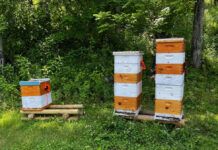
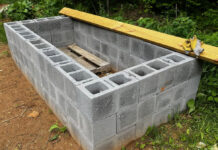
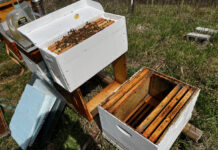
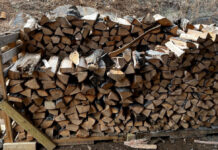

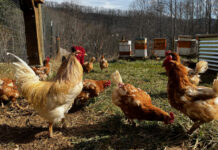
Pete, An eye-opening video. At the 8:40 mark discuss loss of honey bees.
https://rumble.com/v6rzxg3-strange-objects-raining-down-across-america-florida-what-is-the-government-.html
Thanks, Toby.
Beekeepers can avoid the buildup of toxic chemicals and metals by rotating out their wax comb every few years. Of course, it makes you think twice about burning beeswax candles or using it as an ingredient in lip balm and other products.
Comments are closed.